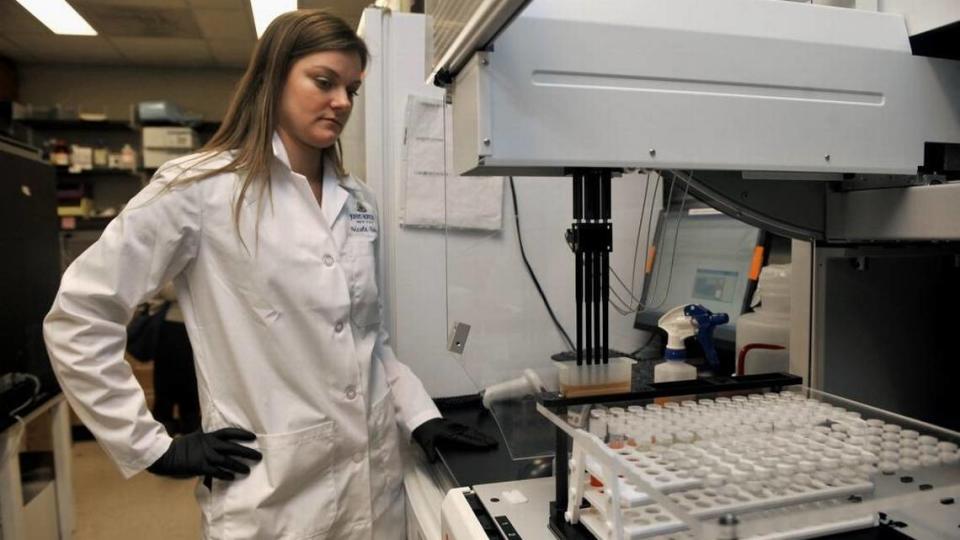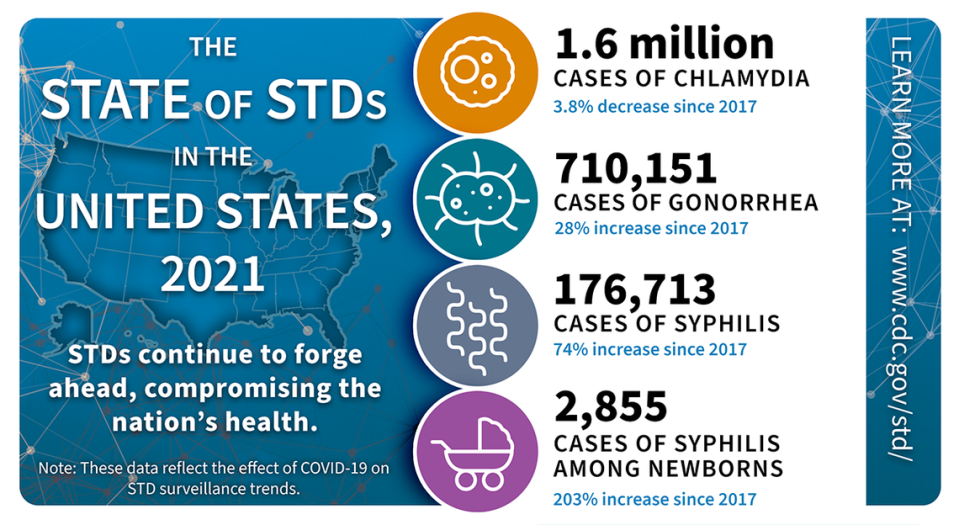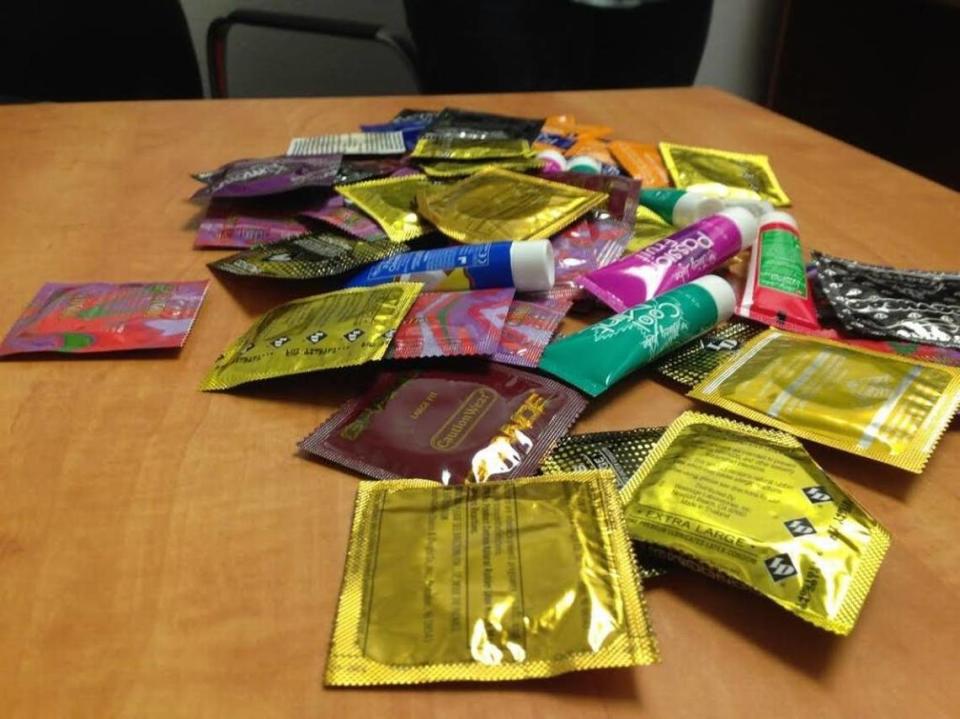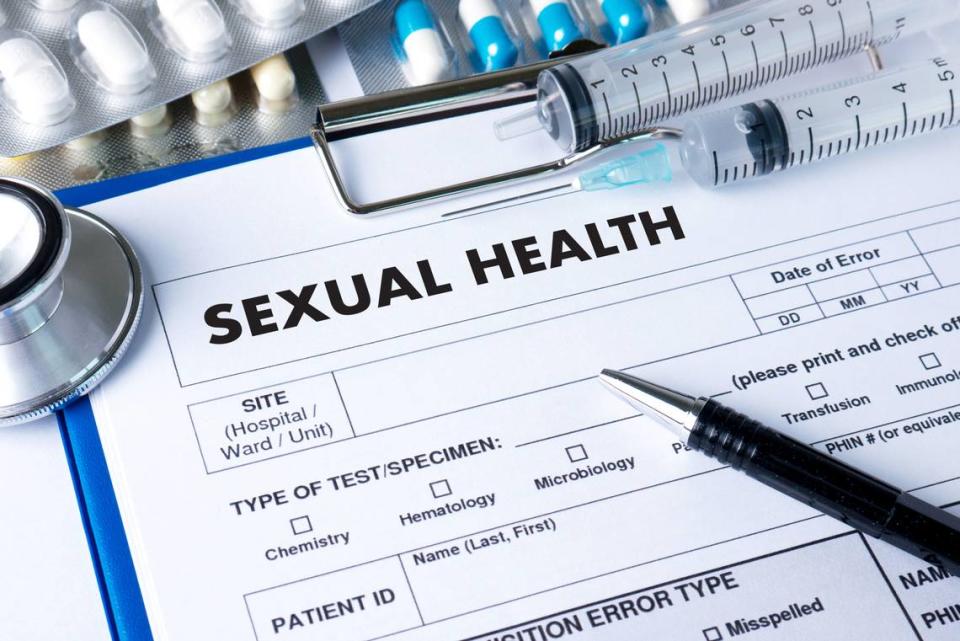Which Washington state counties have the highest rate of sexually-transmitted infections?
Sexually-transmitted infections (STIs) have been, and continue to be, the most commonly-diagnosed and reported conditions in the state of Washington, according to the Department of Health, excluding COVID-19 during the pandemic. . STIs is used interchangeably by medical health professionals with STDs, or sexually-transmitted diseases, according to the CDC.
Certain STIs are more common in certain counties, but the risk of contracting an STI is present everywhere in the state.
Washington’s DOH analyzes STI data across the state and by county. The most recently available complete data sets include numbers from 2020 that were released in 2022. Preliminary data for 2021 and 2022 is also available, but could change.
Only three of the Evergreen State’s 39 counties did not have enough reported cases in 2020 for in-depth analysis: Columbia, Garfield and Wahkiakum.
Washington statewide STI rates
Across the entire state, there were 45,215 reported cases of STIs in 2020, according to DOH data. The vast majority were chlamydia cases — more than 31,000. However, 2020 had a significantly lower prevalence than in 2019, dropping to the best rate since 2016. More than 11,580 cases of gonorrhea were reported, the first time statewide total has dropped since 2011. The least prevalent was syphilis, with 837 reported cases. The remainder of the reports were for genital herpes, under 1,400.
Preliminary data shows reports dropping significantly in 2021, with only 31,352 reported cases. Data for 2022 is also preliminary, but shows a further decrease in cases. This is in sharp contrast to trends reported by the CDC, which showed a nearly 32% increase in infection rates nationally. Gonorrhea and chlamydia rates also increased nationally.
Washington STI rates by county
County STI rates are available in two numbers, total reported cases and the adjusted county rate. The county rate indicates the number of new diagnosed cases per year divided by that year’s recorded population. The rate is given per 100,000 people, so that county-by-county comparisons can factor in population differences.
With so many more people in King County than Pacific County, it seems obvious that there would be more diagnosed STIs in the former. But that wouldn’t necessarily mean it’s more common in King County, because your risk of contracting an STI can also be represented by the number of people with no history of them. When less than 17 cases are reported, no county rate is calculated.
According to the available data, the counties with the most individual diagnosed cases in 2020 were:
Chlamydia - King County - 8,290
Gonorrhea - King County - 4,277
Syphilis - King County - 335
Genital Herpes - Pierce County - 445
However, the highest prevalence per county rate varies:
Chlamydia - Yakima County - 704.5
Gonorrhea - Pierce County - 245.1
Syphilis - Spokane County - 15.3
Genital Herpes - Pierce County - 49.4
The only instance in which the most reported cases matches the highest county rate is regarding genital herpes in Pierce County.

The five counties with the most reported cases of Chlamydia in 2020 were King, Pierce (5,567 cases), Snohomish (2,604 cases), Spokane (2,469 cases) and Clark (1,859 cases). With only 40 fewer cases than Clark County, Yakima narrowly missed the top five. However, it topped the charts for highest county rate, followed by Franklin (647), Whitman (631.9), Pierce (618.1) and Benton (474.5).
The five counties with the most reported Gonorrhea cases in 2020 were King, Pierce (2,208 cases), Spokane (900 cases), Snohomish (796 cases) and Clark (677 cases). But the counties with the highest adjusted rates were Pierce, Yakima (226.2), King (189.2), Benton (184.2) and Franklin (175.7).
The five counties with the most reported Syphilis cases in 2020 were King, Pierce (111 cases), Spokane (80 cases), Clark and Snohomish (62 cases each). Only nine counties even had enough reported cases of Syphilis for an accurate county rate. The top five were Spokane, Benton (15.1), King (14.8), Clark (12.4) and Pierce (12.3).
The five counties with the most reported cases of Genital Herpes in 2020 were Pierce, Snohomish (174 cases), Clark (136 cases), Kitsap and Thurston (84 cases each). Only a dozen counties had enough reported cases for an accurate county rate. The top five were Pierce, Benton (37.4), Franklin (35.1), Kitsap (30.9) and Thurston (28.9).
Safe sex, common STIs in WA
Four STIs were reported in Washington state in 2020: chlamydia, gonorrhea, syphilis and genital herpes. Other STIs are tested for but were not detected.
Chlamydia is the most commonly reported STI, both in Washington and nationwide, according to the DOH. It generally initially causes minor discomfort, but can pose further risks over time. It can increase your likelihood of contracting other STIs and HIV. Untreated chlamydia in women can cause pelvic inflammatory disease, infertility, ectopic pregnancy and other reproductive health issues, according to the DOH.
Symptoms:
Abnormal discharge
Painful urination
Chlamydia is detected by healthcare providers through a urine sample or swab test. It can be treated if detected. Even if you take all the medication provided and all your partners were tested as well, you should still test again three months after the infection.

Untreated gonorrhea can lead to pelvic inflammatory disease, infertility and the infection spreading throughout the body. It can also increase the likelihood of contracting HIV and other STIs.
Symptoms:
Abnormal discharge
Painful urination
Symptoms like a bladder/vaginal infection
Gonorrhea can be treated if detected by a healthcare provider through a urine sample or swab test. The CDC says gonorrhea is becoming more difficult to treat as drug-resistant strains emerge. Monitor your symptoms and return to your doctor if treatment is ineffective. Anyone who was diagnosed with gonorrhea should get retested around three months after treatment.
▪ Syphilis
Syphilis develops in stages, with different symptoms present in different stages. Untreated syphilis can cause internal organ damage, dementia, hearing loss and blindness. It can also increase the likelihood of contracting other STIs and HIV.
Symptoms:
Painless lesions
Rashes
Flu-like symptoms
Patchy hair loss
Headaches
Weight loss
Muscle aches, fatigue
Syphilis can be detected through a blood test. It can be treated if diagnosed, but treatment cannot undo any damage the infection caused, so the sooner it is found, the better.
There are two kinds of ways herpes is spread, HSV-1 and HSV-2, both can cause genital herpes. Oral herpes, which can cause cold sores, are often contracted during youth through saliva. But oral herpes can cause genital herpes through oral sex.
Genital herpes can be spread even if someone has no visible sores, according to the CDC. Many people with genital herpes have no symptoms or very mild symptoms.
Symptoms:
Unusual sores
Blisters around the genitals, rectum or mouth
Flu-like symptoms
Painful urination
Smelly discharge
Healthcare providers may be able to visually diagnose genital herpes, but samples are often needed as well. Blood samples are used to detect HSV antibodies. There is no cure for genital herpes, but there are anti-herpes medications available to decrease the likelihood of spreading the infection. Other medications can manage symptoms and outbreaks.

How do you prevent an STI?
STIs are preventable through communication, protection and awareness. It is recommended that anyone under age 25 that is sexually active get tested at least once a year. Those over 25 should contact their doctor regarding risk factors that should prompt testing, like new partners, multiple partners or a partner with an STI, according to the Centers for Disease Control and Prevention.
Anytime you think you may have been exposed to an STI, you and any partners you currently have should get testing immediately.
Abstinence is the only way to entirely avoid risk of STIs. Those who are sexually active can take certain steps to decrease their chances, like using condoms, limiting partners and testing regularly. Find testing sites near you using the DOH website. Be specific with your healthcare provider, as several samples or tests may be needed.


